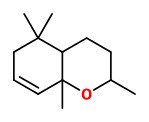Sambucus nigra L. - Adoxaceae - (common) elder, elderberry, black elder, European elder, Schwarzer Holunder
Shrub or small tree, 2-6m high, native to Europe, West Sibiria, North Africa; leaves pinnate; twigs with white marrow; flowers white, anthers yellow; fruits black.
„Flat corymbs (up to 30cm wide ) of many individual flowers appear on young wood from May to July. Their fresh, fruity scent is distinctive and typical of elder.“
http://de.wikipedia.org/wiki/Sambucus_nigra
„Both flowers and berries can be made into elderberry wine, and in Hungary an elderberry brandy is made that requires 50 kg of fruit to produce 1 litre of brandy. In south-western Sweden, it is traditional to make a snaps liqueur flavoured with elderflower. Elderflowers are also used in liqueurs such as St. Germain and a mildly alcoholic sparkling elderflower 'champagne'.“
http://en.wikipedia.org/wiki/Sambucus_nigra
elder flowers
„Analytically speaking, the fragrance of elder flowers is very complex. One easily recognizes several notes working together. Headspace analysis has revealed some unusual odorants. The two most important are characterized in the following way by a professional fragrance chemist (Paul Johnson):
Hotrienol: „It has a fine lindenblossom note with aspects of violet leaf and hints of melon.“
Isoleucin methyl ester: „Very powerful and highly pitched odour, curiously displaying a multitude of fragrance notes. The amine-like character is supplemented by orris-like, nut-like, licorice-like and tobacco-like notes with a hint of natural musk undertone“. Etymology: hotrienol was first identified in the essential oil from the Japanese Ho tree, Cinnamomum camphora var. orientalis subvar. linaloola.“
http://www.bojensen.net/EssentialOilsEng/EssentialOils10A/EssentialOils10A.htm
Ethylamine, isobutylamine and isoamylamine are characteristic compounds contributing to the amine-like portion of the scent of elder flowers.
[Der papierchromatographische Nachweis primärer, sekundärer und tertiärer Alkylamine in Pflanzen. Steiner, M., Stein v. Kamienski, E., Naturwissenschaften, Vol.40(18), 1953, 483-483]
„The major constituents of the essential oil were trans-3,7-dimethyl-1,5,7-octatriene-3-ol (13%) [= hotrienol ], palmitic acid (11.3%), linalool (3.7%), and cis- and trans-rose oxides (3.4% and 1.7%, respectively). They were also principal components of the isopentane extract and of the ethanol concentrate. The three extracts had a good muscat odor.“
[Volatile constituents of dry elder (Sambucus nigra L.) flowers. Toulemonde, B., Richard, H. M., Journal of Agricultural and Food Chemistry, 31(2), 1983, 365-370]
Main component of an elder flower extract with liquid carbon dioxide was cis-linalool oxide (pyranoid), other major constituents were hexenol, cis-linalool oxide (furanoid), nonanal, linalool, hotrineol, and citronellol. The flavour precursor 3,7-dimethyl-octa-1,5-dien-3,7-diol was isolated for the first time. The similarities regarding the aroma (constituents) of elder flowers and muscat wine are very interesting.
[Eberhardt, Reinhild, and Werner Pfannhauser. „Analyse flüchtiger Inhaltsstoffe des Holunders.“ Zeitschrift für Lebensmittel-Untersuchung und Forschung 181.2 (1985): 97-100]
The headspace of S.niger flowers contained 5-hydroxylinalool (6.4%, odor type floral-sour citrus, with a dry straw undertone), furthermore isoleucine methyl ester (7%) and also valine methyl ester (0.3%). In particular methyl isoleucinate contributes to the special odor of the fresh flowers. Literature-mentioned amines like ethylamine, isobutylamine and isoamylamine could not be found, but imines derived from isoleucine methyl ester with acetaldehyde (0.15%), butanal (0.1%), and acetone (0.15%), definitely identified with authentic samples and GC.
[The composition of the headspace from fragrant flowers: further results., Joulain, D., Flavour and fragrance journal, 2(4), 1987, 149-155]
„Fresh elder flowers (Sambucus nigra L.) were extracted with an aqueous solution containing sucrose, peeled lemon slices, tartaric acid, and sodium benzoate to make elder flower syrup. Aroma compounds emitted from the elder flower syrup were collected by the dynamic headspace technique and analyzed by GC-FID and GC-MS… The odor of the volatiles was evaluated by the GC-sniffing technique. cis-Rose oxide, nerol oxide, hotrienol, and nonanal contributed to the characteristic elder flower odor, whereas linalool, α-terpineol, 4-methyl-3-penten-2-one, and (Z)-β-ocimene contributed with floral notes. Fruity odors were associated with pentanal, heptanal, and β-damascenone. Fresh and grassy odors were primarily correlated with hexanal, hexanol, and (Z)-3-hexenol.“
[Olfactory and Quantitative Analysis of Aroma Compounds in Elder Flower (Sambucus nigra L.) Drink Processed from Five Cultivars. Ulla Jørgensen , Merete Hansen , Lars P. Christensen , Karina Jensen , and Karl Kaack. J. Agric. Food Chem., 2000, 48 (6), pp 2376-2383]
Of 59 volatile compounds found in acidified elderflower syrup extract, 28 were included in four principal components (PC1-PC4). Factor analysis showed that „…important contributors to the floral and elderflower flavour of the extracts were rose oxides, hotrienol, linalool, linalool derivatives and α-terpineol, whereas the fruitiness and freshness of the extracts were mainly due to non-oxidized monoterpenes, aliphatic aldehydes and alcohols.“
[Relationship between sensory quality and volatile compounds of elderflower (Sambucus nigra L.) extracts., Kaack, K., Christensen, L.P., Hughes, M., Eder, R., European Food Research and Technology, 223(1), 2006, 57-70]
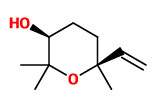 cis-linalool oxide (pyranoid) | 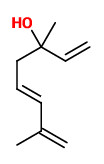 hotrienol |  linalool | 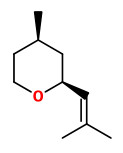 cis-rose oxide | 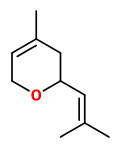 nerol oxide | 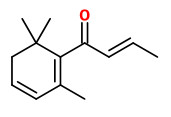 (E)-β-damascenone |
Main volatiles (>1%) of elderflower scent trapped on Porapak SQ were (E)-β-ocimene (68.5%), linalool (10.8%), (Z)-3-hexenol (5.2%), (Z)-β-ocimene (1.3%), and hexenyl acetate (1.1%). Among the minor components were e.g. fruit esters, C6 alcohols, trans-rose oxide (0.01%), cis-rose oxide (0.01%), citronellal (0.02%), isoleucine methyl ester (0.9%), benzaldehyde (0.02%), hotrienol (0.03%), neral (0.02%), nerol (0.7%), geraniol (0.9%), β-ionone (0.02%), anisaldehyde (0.05%), indole (0.01%) and damascenone (trace).
„If we take a look at the scent composition of the true flowers of Sambucus nigra… we can recognize this Gewürztraminer accord [of cis-rose oxide, nerol oxide, linalool and β-damascenone] in a nearly idealized manner…“
[Meaningful Scents around the World, Roman Kaiser, Zürich 2006, 185; 259-260]
Headspace Solid-Phase Microextraction(HS-SPME) of elderflowers from two austrian main varieties (Haschberg, Rubin) and wild species of Sambucus nigra yielding over 100 substances which are contributing to the typical scent. Most noticeable concentration differences between the two cultivated varieties shown the terpenes ocimene (main component), linalool, linalooloxide and epoxylinalool. Wild species show nearly identic aromatic profiles.
[Aromakomponenten in Holunderblüten. Georg Innerhofer, Barbara Siegmund. Haidegger Perspektiven, 2011, 6-7] http://www.verwaltung.steiermark.at/cms/dokumente/11712303_75777092/a133b95d/2011-01.pdf
GC-MS and GC-O were used to identify the volatile compounds of the elder flowers and the sensory properties of the compounds. For the evaluation of the sensory properties of blossoms as well as syrups, sensory evaluation was performed using a trained sensory test panel. Linalool, rose oxide, 6-methyl-5-hepten-2-one, 2-methylbutanal, (E)-2-hexenal, (Z)-3-hexenol, (Z)-3-hexenyl acetate, geraniol, α-terpineol, neral, and β-damascenone showed the highest aroma potential in elder flowers.
[Sortendifferenzierung von Holunder über das Aroma der Blüten, Pabi Nicole, 2012]
https://diglib.tugraz.at/download.php?id=576a7a33edeb2&location=browse
„The elderflower concrete is obtained by primary solvent extraction of the flowers, and the absolute is produced through alcoholic washing of this concrete.“ Elderflower absolute owns a sweet, hay, dried fruit- and tobacco-like odor.
[Elderflower abs 984310, Firmenich 2015] http://firmenich.cdn.oxv.fr/uploads/files/ingredients/marketing-sheet/perfumery/ELDERFLOWER_Perf_V1_Feb_15.pdf
elderberry
„Aroma compounds emitted from elderberry juices processed from seven cultivars…sensory characteristics of the individual aroma compounds in elderberry juice were determined by a GC-sniffing technique, and the compounds were grouped according to their odour. The characteristic elderberry odour is due to dihydroedulan and β-damascenone, of which the former occurs in relatively high concentrations in the headspace of elderberry juice.
The fruity group consisted of aliphatic alcohols and aldehydes and aromatic esters, of which 1-pentanal, 2-methyl-1-propanol, 2- and 3-methyl-1-butanol, 1-octanal, 1-octanol and methyl and ethyl benzoate contributed with fruity notes. In the flowery group, 1-nonanal, nerol oxide and (Z)- and (E)-rose oxide contributed with characteristic elder flower odour, whereas other flowery notes were associated with hotrienol, linalool and α-terpineol. Fresh and grassy odours were correlated with 1-hexanal, (E)-2-hexen-1-al, (Z)-3-hexen-1-ol, (E)-2-hexen-1-ol and (E)-2-octen-1-al of the grassy group, whereas 1-octen-3-ol and 1-octen-3-one of the agrestic group contributed significantly with the characteristic aroma of mushrooms.“
[Olfactory and quantitative analysis of volatiles in elderberry (Sambucus nigra L) juice processed from seven cultivars. Karina Jensen, Lars P Christensen, Merete Hansen, Ulla Jørgensen, Karl Kaack. Journal of the Science of Food and Agriculture, Volume 81, Issue 2, pages 237-244, 2001]
Hot or cold juice from elderberries is traditionally used as diaphoretic, diuretic and laxative.
[Medicinal Plants of the World. Ben-Erik Van Wyk and Michael Wink, Pretoria 2004, 285]
„Three compounds with characteristic elderberry odour (β-damascenone, nonanal, dihydroedulan) were closely correlated with the sensory quality of elderberry together with compounds with fruity, floral, green and/or miscellaneous odours.“
[The relationship between sensory quality and volatile compounds in raw juice processed from elderberries (Sambucus nigra L.)., Kaack, K., Christensen, L.P., Hughes, M., Eder, R., European Food Research and Technology, Vol.221(3-4), 2005, 244-254]
http://www.hblawo.bmlf.gv.at/upload/documentbox/Holunder-Aroma-Eur-Food-Res-Tech-2005.pdf
Air dried and crushed mature elderberries were subjected to microdistillation and the sample was analysed by GC-MS. 34 Volatile compounds were identified by yielding 86.1% of the sample. Main constituents phenyl acetaldehyde (32.3%) and benzaldehyde (7.9%), ethyl linolenate (5.4%), 4-vinyl guaiacol (4.9%), linalool (4.5%), phenyl ethanol (4.1%), 2-nonanone (3.0%), and (E)-β-damascenone (2.5%).
[The Volatile Compounds of Elderberries (Sambucus nigra L.)., Ağalar, H.G., Demirci, B., Başer, K.H.C., Natural Volatiles & Essential Oils, 1(1), 2014, 51-54]
http://nveo.org/images/AGALAR2014-1-2.pdf
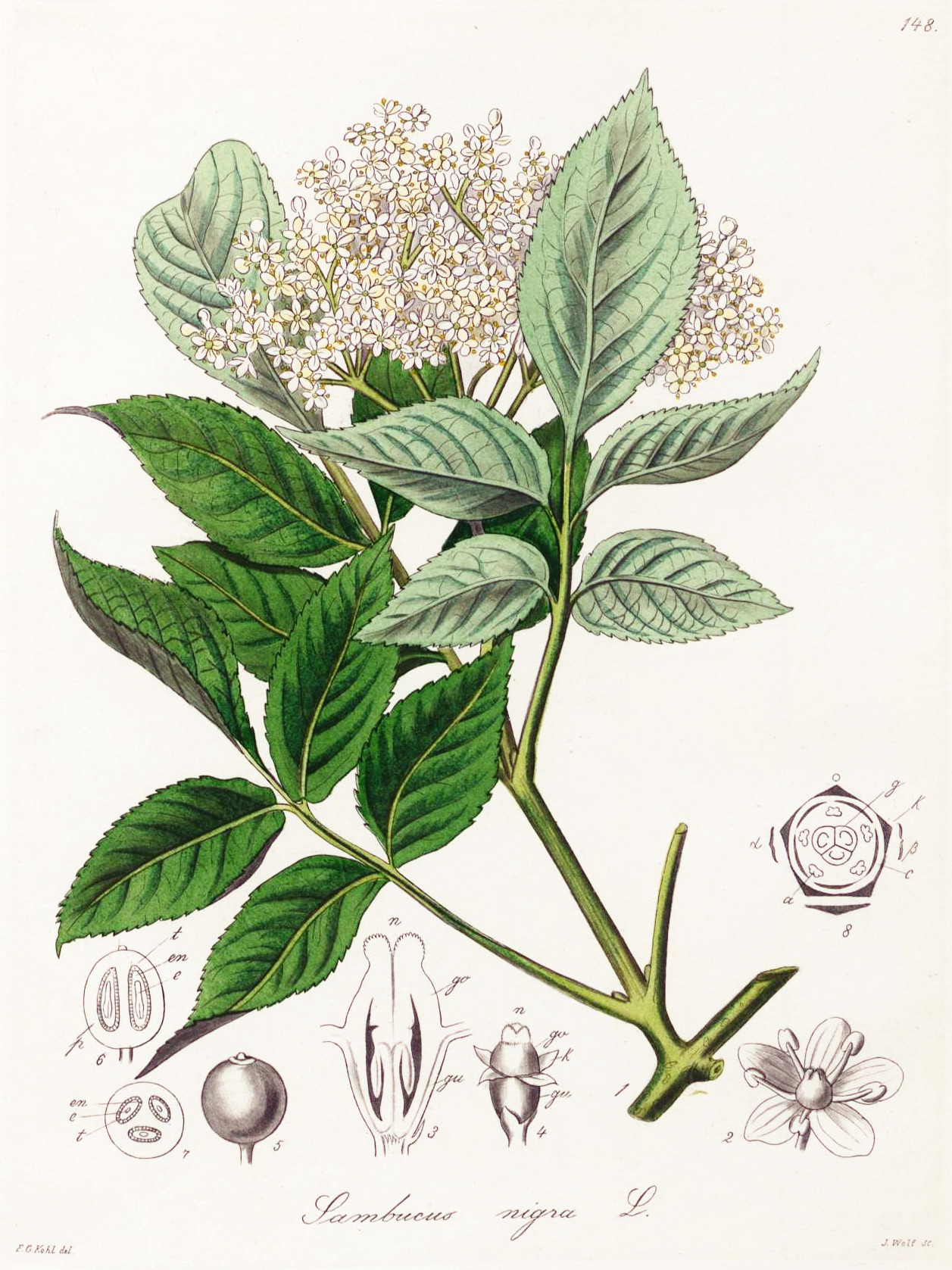
Kohl,F.G., Die officinellen Pflanzen der Pharmacopoea Germanica, t.148 (1891-1895)
http://www.plantillustrations.org/species.php?id_species=904407
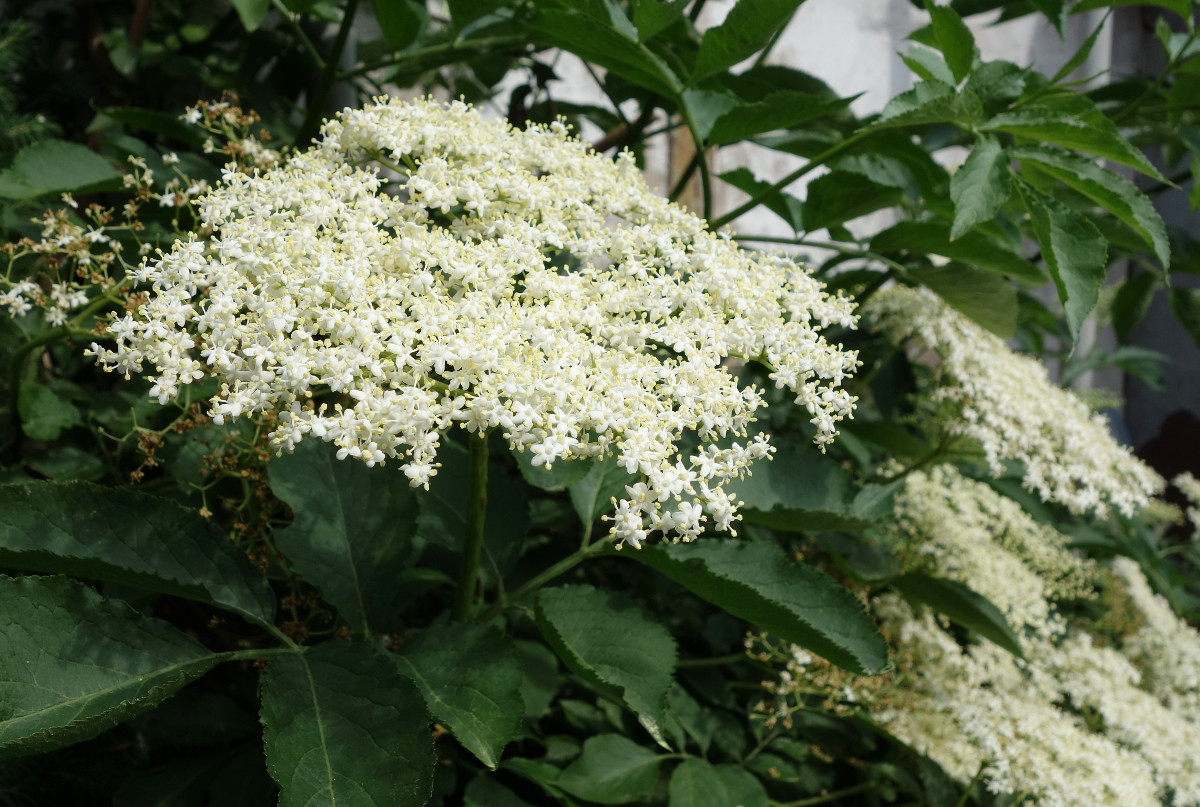
Sambucus nigra flowers CC BY-SA 3.0, Author: Andreas Kraska
